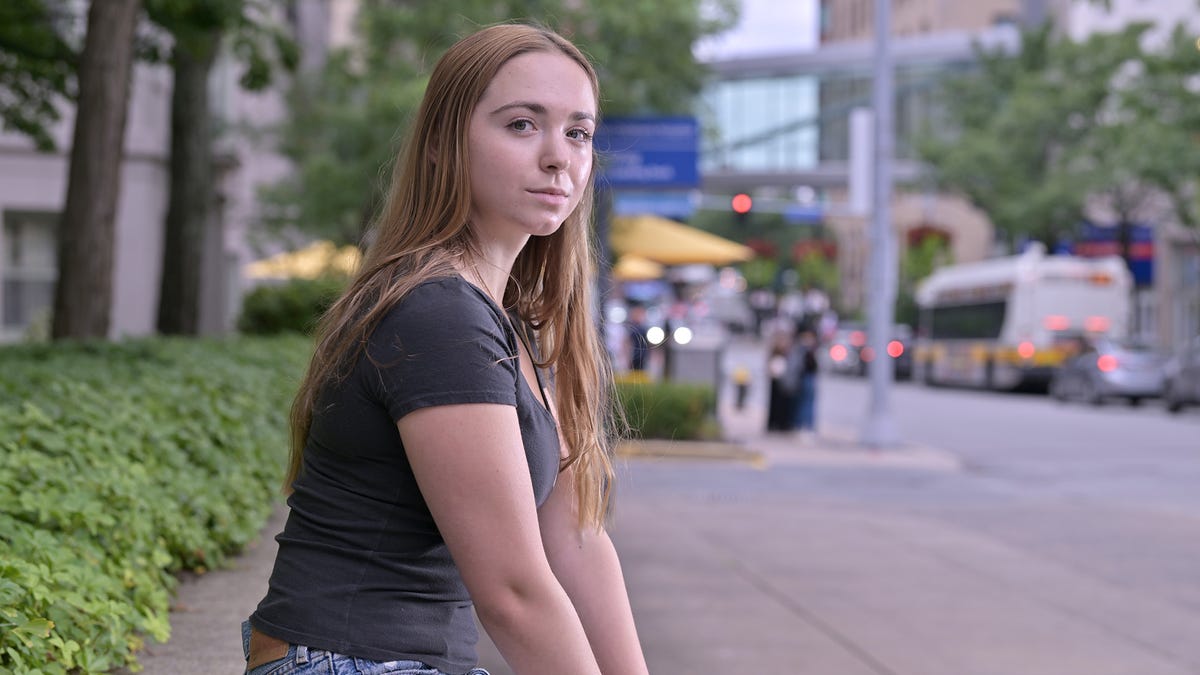Teens and kids with long COVID are displaying unexpected new symptoms
Rose Lehane Tureen is a highly active teenager.
This 16-year-old stands out as her school’s president, an Irish step dance champion, a singer, a cross-country runner, and a straight-A student at her high school in Maine.
Despite these accomplishments, she battles a severe headache that has plagued her for over four years—one of the numerous long COVID symptoms she’s experienced since contracting the virus in March 2020.
Initially, Rose visited the emergency room multiple times and was admitted to the hospital twice due to severe dizziness and intense headaches. Her symptoms also included red and swollen fingers, toes, and ears; peeling skin; joint pain; temperature regulation issues; and vivid nightmares.
Long COVID has stolen years from her life, and she’s working hard to regain them.
“I had to choose between wasting away on the couch in the dark or striving to do things that bring me joy,” she said. “I’m taking back what has been taken from me and trying to live my life.”
Rose is among an estimated 5.8 million children in the United States affected by long COVID, many of whom remain undiagnosed due to a failure among doctors, parents, and patients to recognize the range of symptoms, experts suggest. A new study, supported by the National Institutes of Health, strives to equip families with information, highlighting the most frequent long COVID symptoms in school-aged children and teenagers.
“Kids are not just small adults,” stated Dr. Melissa Stockwell, a coauthor of the study and division chief of child and adolescent health at Columbia University. Understanding how long COVID impacts individuals at various ages can facilitate better diagnoses and prompt care for children.
Long COVID symptoms in children and teenagers
The research examined 5,300 school-aged children and teens across over 60 healthcare facilities in the U.S. from March 2022 to December 2023.
Findings indicate that teenagers aged 12 to 17 were more likely to report fatigue, discomfort, and alterations in taste and smell. In contrast, younger children aged 6 to 11 predominantly experienced attention issues, sleep disturbances, and gastrointestinal problems, as highlighted in a report released on Wednesday in JAMA.
Long COVID symptoms appeared to impact nearly all organ systems, with most patients experiencing symptoms across multiple areas of their body.
Younger children and teenagers often reported experiencing back or neck discomfort, headaches, lightheadedness or dizziness, and memory or focus difficulties. Additionally, researchers were surprised to discover that among younger kids, common symptoms included specific phobias, like a fear of crowded or confined spaces, and school avoidance.
The symptoms observed in younger children were less likely to align with those seen in adults suffering from long COVID, emphasizing the need for age-specific research.
“The symptoms outlined in the research index may not encompass all symptoms a child could experience, nor are they the most severe, but they serve as significant predictors for identifying those who might have long COVID,” explained Dr. Rachel Gross, the lead author of the study and an associate professor of pediatrics and population health at New York University Grossman School of Medicine.
Rose could have greatly benefited from this research back in 2020. It took over a year for her to find doctors willing to take her array of symptoms seriously. Ultimately, she established care with a dedicated team at Boston Children’s Hospital.
“I transitioned from qualifying for junior Olympics to struggling to walk,” Rose recounted. “It was a dramatic and perplexing change.”
Lack of comprehensive data
Despite the valuable findings from the new study, health professionals acknowledge that much remains uncertain regarding long COVID.
For instance, a significant portion of the data analyzed in the study pertains to patients infected with earlier COVID-19 variants, rather than the most current version of the omicron variant, cautioned Dr. Alexandra Yonts, a pediatric infectious disease expert and director of the post-COVID program at Children’s National Hospital in Washington, D.C.
Those who contract the omicron variant have a reduced chance of experiencing long COVID, but Yonts contends that there isn’t adequate data to substantiate this idea, as omicron has not been prevalent long enough to gather comprehensive long COVID statistics.
“If we’re assessing newly infected children and their likelihood of developing long COVID, we’re missing crucial information,” she stated. “This aspect is essential.”
The research team behind the JAMA study plans to investigate long COVID symptoms in children aged 5 and younger next. Yonts emphasized the urgent need for these young patients to have access to post-COVID clinics that focus on diagnosing and managing persistent symptoms from COVID-19. She mentioned that such initiatives are beginning to close due to insufficient funding and resources.
“These individuals are very complex,” Yonts explained. “Finding a multidisciplinary team that can recognize those symptoms and provide adequate support is quite challenging.”
This complexity is one reason Rose, a teenager from California, moved with her family to southern Maine, looking for easier access to Boston Children’s Hospital, where she attends the long COVID clinic at least monthly. Apart from the specialized COVID team, she has consulted nearly a dozen specialists, including a sleep neurologist, acupuncturist, gastroenterologist, endocrinologist, rheumatologist, and cardiologist, among others.
Rose feels discouraged by the closure of post-COVID clinics for individuals like her, though she isn’t entirely surprised. While she observes society moving forward from the pandemic, she continues to suffer from pain. She hopes the JAMA study will renew focus on the condition.
“There’s a misconception that since lockdowns have ended, COVID has vanished,” she observed. “This mindset is incredibly tough and dismissive for those suffering from long COVID – especially children.”

